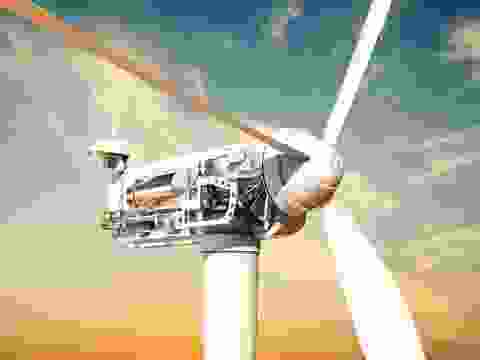Mexico
Critical minerals, policy, and the energy transition
The Energy Transition in Mexico
Mexico is navigating its path towards an energy transition, aiming to balance economic growth with environmental sustainability and social equity. The country's strategy encompasses a shift from reliance on fossil fuels to a greater emphasis on renewable energy sources such as solar, wind, and geothermal power. This transition is propelled by Mexico's rich renewable energy potential, coupled with the pressing need to address climate change and reduce carbon emissions. Central to Mexico's energy strategy are efforts to modernize its energy infrastructure, increase energy efficiency, and reduce the environmental impact of energy production. The transition also involves complex challenges, including regulatory reforms, investment in new technologies, and the development of a skilled workforce. By pursuing these goals, Mexico aims to achieve energy security, create sustainable economic opportunities, and contribute to global efforts to combat climate change, setting a precedent for how emerging economies can navigate the complexities of the energy transition.
Mexico's international economic, trade, and security alliances
From Fossil Fuels to Renewables: Mexico’s Energy Transition
Despite recent progress, Mexico’s energy sector continues to be heavily reliant on fossil fuels. As of 2023, approximately 75% of the country’s electricity was generated from fossil sources—primarily natural gas (60%), followed by oil (10%) and coal (5%). Renewable energy made up around 25% of total electricity generation, with wind contributing 10%, solar 8%, and other renewables the remaining 7%.
However, Mexico is in the midst of a major energy transformation. This shift is being driven by ambitious clean energy targets, substantial federal investment, and a strategic move towards more sustainable power sources. At the heart of this transformation is the Plan for the Strengthening and Expansion of the National Electric System 2025–2030, led by the state-owned Federal Electricity Commission (CFE). The plan aims to add 22,674 megawatts (MW) of new generation capacity by 2030 across 51 projects, with an estimated investment of $22.3 billion. These include seven wind farms, nine solar photovoltaic (PV) plants, five natural gas-fired combined-cycle plants, and one internal combustion facility.
This energy transition is expected to create thousands of jobs, reduce greenhouse gas emissions, and strengthen national energy security. The government plans to increase the share of clean electricity generation from 22.5% in 2024 to 37.8% by 2030, while phasing out coal entirely. These goals are aligned with Mexico’s wider climate commitments, reducing emissions by 35% by 2030 and reaching net zero by 2050.
Between November 2023 and October 2024, fossil fuels continued to dominate electricity generation, supplying around 74% of total output—natural gas alone accounted for over 60%. In contrast, low-carbon sources contributed nearly 22%, with hydropower leading at approximately 6%, and wind and solar each providing about 5%.
By the end of 2023, Mexico’s total installed generation capacity reached 90.6 GW. This was distributed across several sources: gas (29.4 GW), oil (22 GW), hydro (12.6 GW), solar (10.6 GW), wind (6.9 GW), coal (5.5 GW), nuclear (1.6 GW), biomass (1 GW), and geothermal (1 GW). These figures reflect a steady diversification of the energy mix, particularly through growth in renewables.
In terms of energy consumption, Mexico reached a record high in 2023, consuming nearly 8.45 exajoules, a 3.3% increase compared to the previous year.
Mexico’s energy transition is guided by several key legislative frameworks.
-
The Law for the Development of Renewable Energy and Energy Transition Financing (LAERFTE), enacted in 2008 and revised in 2012, sets maximum fossil fuel generation limits, 65% by 2024, 60% by 2035, and 50% by 2050, implying clean energy targets of 35%, 40%, and 50% for those same milestones.
-
The Energy Transition Law (2015) supports the sustainable and efficient use of energy. It established the National Commission for Efficient Use of Energy (CONUEE) and introduced implementation tools such as the Energy Strategy and the National Programme for the Sustainable Use of Energy (PRONASE).
Renewable energy expansion
Between 2013 and 2023, the share of renewables in Mexico’s energy mix grew significantly—from 12% to 25%. Wind power saw the largest expansion, increasing from 3.3 GW to over 9 GW, with much of this development concentrated in Oaxaca, home to some of the largest wind farms in Latin America. Solar capacity also surged, rising from just 0.2 GW in 2013 to 7 GW in 2023, driven by the strong solar potential in northern Mexico.
Looking ahead, the National Energy Strategy projects that renewable energy could supply up to 40% of the country’s electricity by 2033, provided that investment conditions and regulatory frameworks remain favourable. Solar capacity could reach 20 GW, while wind may grow to nearly 15 GW. However, Mexico is unlikely to meet its 2024 target of generating 35% of electricity from clean sources—highlighting a persistent gap between policy ambition and on-the-ground implementation.
Renewable energy remains a central pillar of Mexico’s long-term energy strategy. By 2030, the government plans to add 27 GW of new generation capacity, with 54% coming from the CFE and the remaining 46% from private investment. Much of this growth will come from solar and wind, with key projects like the Becker Solar Farm and the Haeckel Hill–Thay T’äw Wind Energy Project already underway. Mexico’s solar capacity is expected to reach 40 GW by the end of the decade, supported by large-scale initiatives such as the Sonora Plan, which includes the development of one of the world’s largest solar power plants.
To support this transition, the National Strategy for the Electricity Sector 2024–2030 outlines a $23 billion investment in the CFE. Of this, $12.3 billion is allocated for new generation projects totalling 13,024 MW, $7.5 billion for transmission infrastructure, and $3.6 billion for distribution upgrades.
President Claudia Sheinbaum’s National Electric System Expansion Plan 2025–2030 complements this effort, aiming to add 13.02 GW of new capacity over six years. This includes nine solar PV projects with a combined capacity of 4.67 GW (requiring $4.9 billion in investment) and seven wind farms totalling 2.47 GW (with a projected cost of $3.2 billion). The private sector is expected to contribute at least 6.4 GW—most of it through renewable sources.
Notable projects include Puerto Peñasco Photovoltaic Power Plant which is set to become Latin America’s largest solar facility, this project will generate 1,000 MW of electricity using 278,000 solar panels spread across 2,000 hectares. The plant will also include 192 MW of battery storage capacity and is projected to avoid more than 925,000 tonnes of CO₂ emissions each year. Phase one (120 MW) was inaugurated in February 2023, and phase two (300 MW) is scheduled for completion by June 2024.
There is also Cimarron Wind Farm located in Baja California, this 320 MW wind project is backed by a $550 million investment from Sempra Infrastructure. It will feature 64 turbines and is expected to supply clean energy to over 84,000 homes in California. Once operational—targeted for the end of 2025—the facility will cut emissions by approximately 200,000 tonnes annually.
Private investment remains robust. Iberdrola has committed $1 billion during the first two years of Sheinbaum’s administration to develop 1,000 MW of renewable capacity, primarily through wind and solar. This forms part of a larger $2.9 billion initiative to build 17 new renewable energy plants by 2030.
Nuclear and natural gas
While renewables are prioritized, Mexico is also investing in nuclear energy and natural gas to ensure grid reliability. The Darlington Small Modular Reactor (SMR) project, expected to be operational by 2028, will provide 200 MW of clean energy. Additionally, the CFE plans to develop 6 GW of gas generation over the next six years to support the transition.
Energy efficiency and grid modernisation
Mexico is focusing on energy efficiency and grid modernization to reduce emissions and improve reliability. The Plan Mexico includes 145 transmission projects to enhance the grid’s capacity and stability. Programs like the Peak Smart Program offer rebates for energy-efficient upgrades, helping to reduce peak electricity demand and lower costs for consumers.
National and private sector partnerships
The federal government is playing a crucial role in Mexico’s energy transition. The Smart Renewables and Electrification Pathways Program (SREPs) has funded 19 projects with over $160 million, including Indigenous-led initiatives. Private sector participation is also encouraged through schemes like the Long Term Producer and Mixed Investment, which allow private investors to collaborate with the CFE on energy projects.

Source: SFA (Oxford)
Canada's energy and power mix
Energy Raw Materials and products produced in Mexico
Essential minerals production and products in Mexico




Meet the Critical Minerals team
Trusted advice from a dedicated team of experts.

Henk de Hoop
Chief Executive Officer

Beresford Clarke
Managing Director: Technical & Research

Jamie Underwood
Principal Consultant

Ismet Soyocak
ESG & Critical Minerals Lead

Rj Coetzee
Senior Market Analyst: Battery Materials and Technologies

How can we help you?
SFA (Oxford) provides bespoke, independent intelligence on the strategic metal markets, specifically tailored to your needs. To find out more about what we can offer you, please contact us.




































































